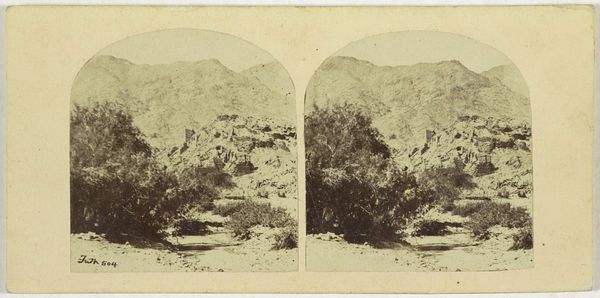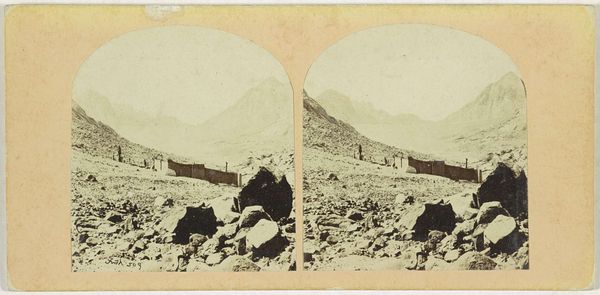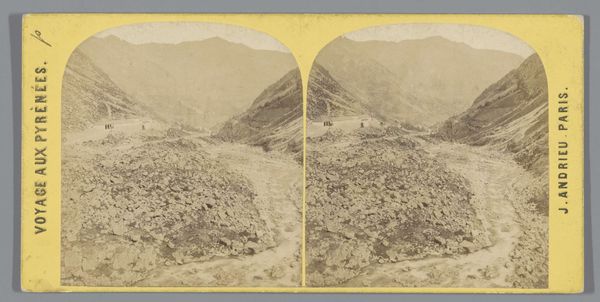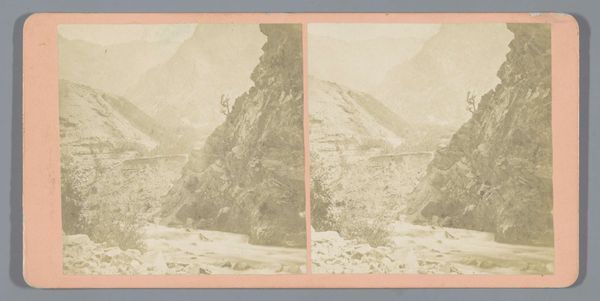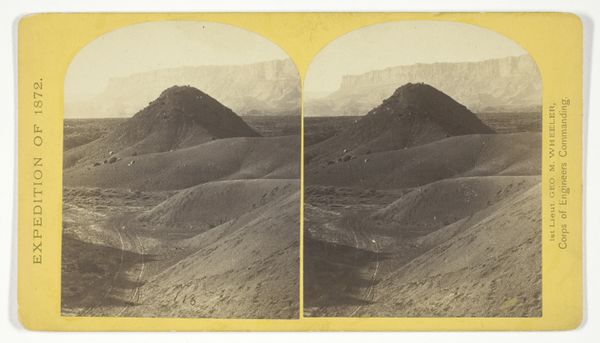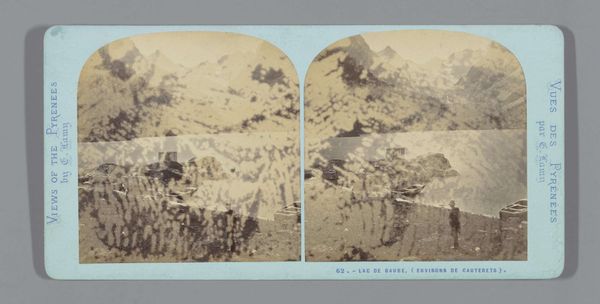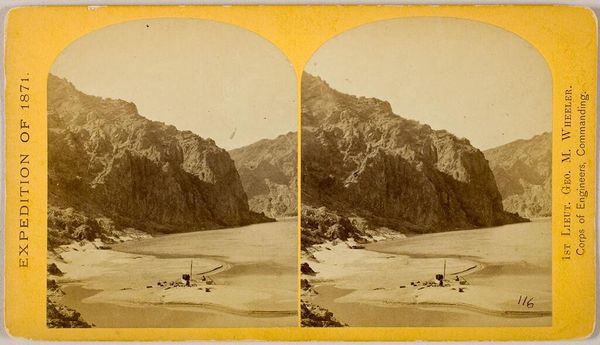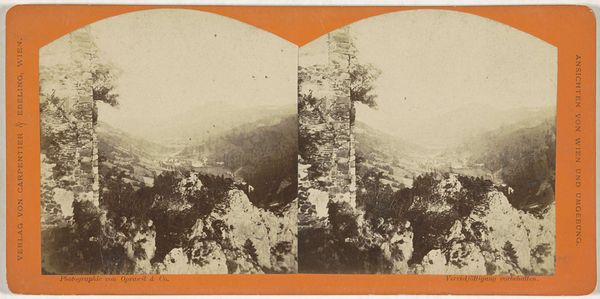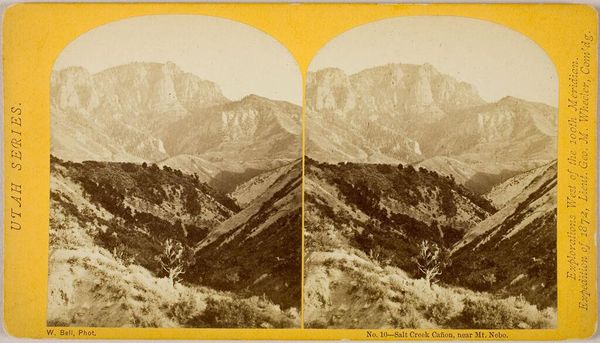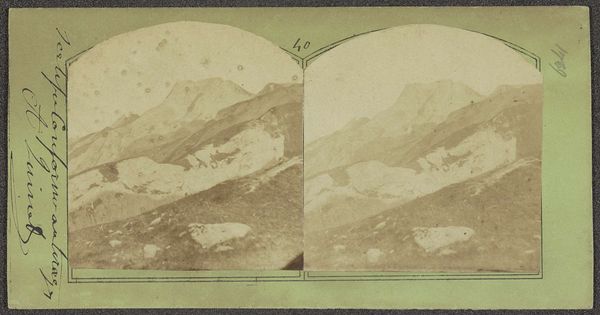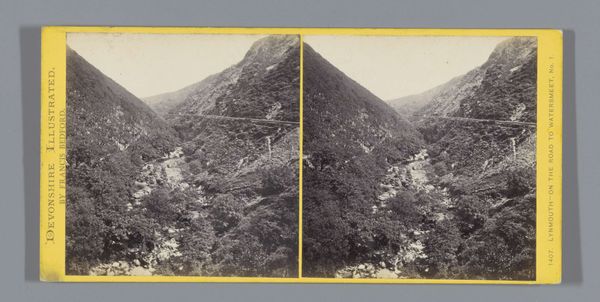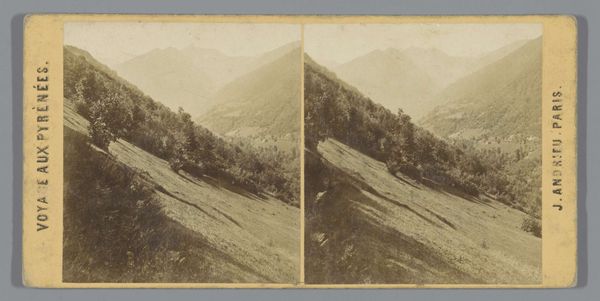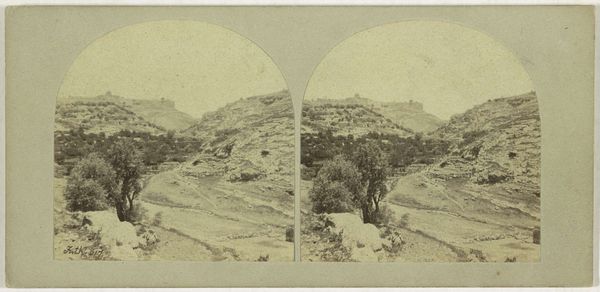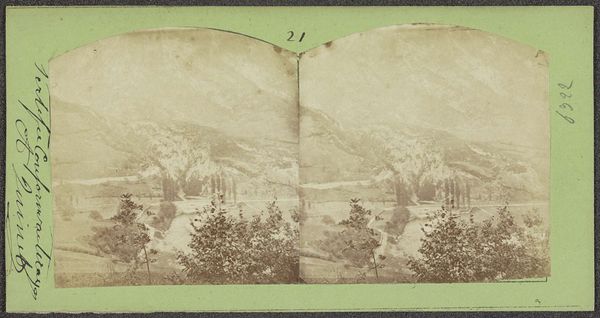
photography, albumen-print
#
landscape
#
photography
#
orientalism
#
albumen-print
Dimensions: height 84 mm, width 178 mm
Copyright: Rijks Museum: Open Domain
Editor: Here we have Francis Frith’s "Gezicht op de Serbal berg in de Wadi Feiran vallei," taken between 1859 and 1861. It’s an albumen print, and there's something very striking about the way he's captured this almost desolate landscape. It makes you wonder about the physical experience of taking such a photograph back then. What stands out to you in this piece? Curator: What grabs my attention is less the romantic depiction of a distant landscape and more the practical considerations and the implications of Frith's endeavor. Think about the materiality: the albumen process itself, the labor involved in setting up a darkroom tent in Wadi Feiran, the transport of chemicals and heavy equipment. These become central to the artwork. Editor: I see what you mean! It’s easy to get lost in the image itself and forget about the process. So, the focus shifts from the view to the Victorian fascination with, and consumption of, the ‘Orient’ as an idea? Curator: Precisely. This image isn't just a landscape; it's a commodity, part of a larger industry that fueled European fantasies about the East. The very act of photographing, producing, and distributing these prints speaks volumes about Victorian trade and power structures. Do you consider how those distribution systems impacted audiences? Editor: I suppose audiences back home could consume this exotic ‘other’ from the safety of their parlors without considering the complexities of the land or the people depicted. It’s almost like a form of visual colonialism! Curator: Indeed. The image itself becomes a material manifestation of that colonial gaze, and understanding that perspective shifts how we interpret Frith’s work entirely. Editor: I hadn't considered that angle at all! Thinking about the labor and the mechanisms of production and distribution really open up the photograph’s historical context. Thanks! Curator: Absolutely. The art lies not just in the aesthetic, but in understanding its material and societal context.
Comments
No comments
Be the first to comment and join the conversation on the ultimate creative platform.
